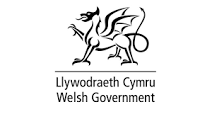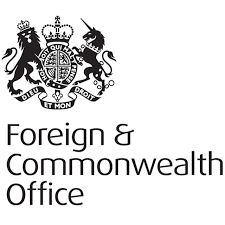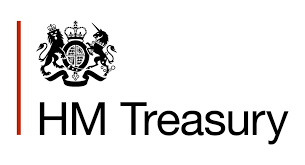PRESS RELEASE : Vice Admiral Keith Blount NATO DSACEUR DSEI 2023 Keynote [September 2023]
The press release issued by the Ministry of Defence on 13 September 2023.
Vice Admiral Keith Blount, NATO’s Deputy Supreme Allied Commander Europe delivered his keynote speech at Defence and Security Equipment International 2023.
It’s a huge pleasure and a privilege to be with you, in order to just give you some context from NATO, as NATO’s Deputy Supreme Allied Commander for Europe, about how NATO is changing the drivers of change, and how we are adapting as we move forward in the context, of course, of a very disturbing and unsettling situation here in Europe.
To that end, I will talk about NATO’s shifting strategic context, the adaptation of NATO. But I will close by talking a little bit about the fundamental importance of industry to the alliance, and there’s no better place to do it than here, and if I’m completely frank, there’s no better time to do it than now.
So the shifting strategic context of NATO is one that was catalysed most purposefully I would suggest in 2014, when Crimea was invaded by Russia and we in the Alliance were perhaps doing a little bit of looking at ourselves rather than looking at the situation as to how that possibly could have occurred and how we must be better prepared for any similar event in future.
And it was from that moment that a number of things started to fall into place, and we saw NATO’s adaptation continue through a series of summits, and, of course, through the approach to Ukraine. But there were some fundamental things that happened within the Alliance in the period between 2014 and Russia’s illegal invasion of Ukraine.
It has taken us from the time at the end of the Cold War, when NATO shifted strategically, of course, through a period of operations out of area in Afghanistan as an example, conducting missions like counter piracy, ocean shield, through to a return to great power competition, and a real Euro-Atlantic focus.
So, in the Madrid communique, that was not this summit, but the one that preceded it, NATO identified head on the most pervasive, challenging threats that the Alliance faces.
It would be of no surprise to you that Russia features in that, and I’m sure of little surprise also, that the other threat identified has been that of terror groups. Both of those threats remain now. There is naturally a focus on Ukraine and on Russia, because it is the immediate threat. It is the one that is governing the geopolitical and strategic situation within the Alliance, and of course its nations, but we never take our eye off the threat from terror groups in all of its forms.
It’s also important though, to recognise that NATO has also identified China as a competitor, and of course when China and Russia come together, talk together, act together we have a compounding challenge. So the Madrid communique identifies that challenge. And I quote from a conversation that was clearly choreographed and staged just earlier this year when Putin and Xi got together and there are changes happening the likes of of which we have not seen for 100 years, and let’s drive those changes together, to which Putin agreed.
And of course we see a increasing numbers of exercises between those two nations, and we see increasing complexity in the way in which those exercises are conducted. And there are other changing dynamics within the Euro Atlantic area, such as climate change, and the Northern Sea Route and its access, that naturally lends itself to a more contiguous link between the Euro Atlantic and the Far East. I don’t want to over stress this, but I do want to make the point that NATO is not blind to it.
And of course, the other thing we are seeing in all of its forms, state and non state, is hybridisation. The shift in the way in which mischief in the grey zone, activities that fall short of trigger points in terms of Article 5, or direct military response, are now happening more frequently, and in more different and diverse ways.
Now, when I went through my classical military education, I was taught to identify and remember the diplomatic information, military, and economic dimensions, in which instruments of power could be executed. Now we have a new acronym that extends well beyond four letters. One that I have not even had the time to assemble into anything that could be remembered, because almost every time I give this presentation or presentations like it, I just add another circle. But these are the tactics identifiable with Russia in the Black Sea right now.
So this challenge is a biggie and therefore the way in which NATO reacts to it and adapts to be ready, ultimately to deter, defend and if necessary fight and win, has been catalysed, and the changes have been significant. I’ll add climate change as the end. It’s a threat multiplier. You can apply climate change to almost anything that I have said previously and it doesn’t make anything easier. So it’s another one of those changes that has to be recognised, identified and ultimately acted upon, and NATO has acted upon that as well.
So how has NATO adapted? Firstly, of course, we have seen the accession of new members recently, of course, Finland, and Sweden is not far behind, we hope. They are two significant military powers with a significant economic back drop to everything that they do that enjoy influence within Europe, and will definitely enjoy influence in the Alliance.
Putin should have been very careful what he wished for. Because I’m absolutely convinced what he thought he would do was fracture the Alliance, not unite it, and not see it build further. Build further, with big nations with big military capabilities.
We now have a military strategy. You could be excused for thinking that NATO always had a military strategy, but actually achieving consensus across more than 30 nations around something as fundamental as a military strategy, is perhaps harder than you would have thought. But we have achieved it, and for the first time in decades, we can now start to dock concepts and plans with a strategy that gives meaning to activity from the strategic, through the operational, to the tactical levels.
So that is the way the strategy looks at the top of the tree. And it has led to two very important totemic concepts. One of them is owned by Allied Command Transformation on the other side of the Atlantic in Norfolk, and one of them is owned by Allied Command operations in Belgium. But the NATO Warfighting Capstone concept is the capstone concept that will shape NATO’s capability future, over the horizon, out to the 20 to 30 year point. It is the one that identifies the type of capabilities we will need to face the threats that I have already identified. And it has a campaign plan, if you will, to support it called the Warfare Development Agenda.
On the other side of the house, we have the concept for deterrence and defence of the Euro Atlantic area. This is the document that captures Russia and terror groups as threats and starts to map out the concept with which we would deal with them. And it leads to a family of plans. And I can be excused, I’m afraid, in this audience at this level of classification, for not revealing what those plans are but be assured they are more granular, sophisticated, detailed, and ultimately credible than anything the Alliance has had since the end of the Cold War. They replace other plans and they are far, far better.
The family of plans as identified here in the Vilnius communique are very much 360 in their nature, and we use 360 in every single way. So it’s 360 across the AOR north, south, east and west and it’s 360 upwards and downwards. And of course it also looks to NATO’s boundaries and what lays beyond.
We have a new force model. In the past we have aligned NATO’s capabilities in tiers of readiness, but in a way that has been complicated and tricky for nations to populate with their own capabilities.
So we have gone through a process of modernisation and simplification, in order that now we have a very straightforward way of approaching those tiers of readiness, and a very straightforward way of asking nations to contribute to them.
This is directly out of the Vilnius communique. The numbers are wrong, so if you write them down, don’t hold me to them, because they were published in an unclassified document, but the principle is that we now just have three tiers of readiness, cunningly named tiers one, two, and three, in order to avoid confusion with tier one, the highest readiness forces, and tier three, the forces at far lower levels of readiness.
And you can see the readiness scales there, and we are doing lots of very detailed work, in order that we can identify the relationships between notice to move, notice to effect, when the commanders require the forces to be in the right place, and we are solving these as we go along.
And of course, we recognise that we need to get closer to industry. We recognise that industry is a fundamental partner of the Alliance. And perhaps more importantly than that, we recognise that this is an area that I think we, collectively, can improve upon. And that is one of the reasons I’m spending time at DSEI to promote that message and to encourage you to become part of it.
Part of the way we’re doing that is by constructing new exercises, or building on old ones in a way that changes them to be more relevant to NATO’s current situation, and the more strategic situation in which the Alliance operates. So CWIX ACT so an Allied Command Transformation exercise, that basically gets after CIS at scale. It gets after interoperability at scale, and it allows industry and military partners to ultimately come together in order to describe and start to shape the Alliance’s future. 36 nations in that exercise of this year.
And CWIX is part of what we would describe as the interoperability continuum, because we recognise that what is interoperable today may not be interoperable tomorrow. And therefore it’s constantly about testing, refining, challenging ourselves to keep up with change. So we have Tide Sprint, which is all about accelerating new ideas, and Tide Hackathon, which is all about looking at specifically difficult parts of interoperability and looking for ways to solve them.
Now, these are available, if you literally Google those terms and add NATO to them, you will find lots more. In the interest of time, I won’t dwell on them now. But I do advertise them because there is opportunity for you to participate in them.
When I was the commander of NATO’s Maritime Command, in my last job, I worked very closely with Allied Command Transformation, to conceive, design and ultimately execute a brand new exercise called Dynamic Messenger that worked hand in hand with a Portuguese national exercise called REPMUS, to bring uncrewed autonomous and remotely operated systems into the maritime environment at both low technological maturity, and relatively high pre-production, technological maturity, and either demonstrate them or integrate them into a maritime task group environment to provide dilemmas and challenges to command decision making.
That exercise will run again this month, this year, and in the years that followed, and if you would wish to be part of it, to either demonstrate or integrate new capability in the maritime environment, as an example, one of those two exercises could be for you.
We have the new NATO Innovation Fund, this is a venture capitalist fund. There’s about a billion Euros in it, so it’s a significant amount of money. There are 23 participating nations, and it’s got a real emerging and disruptive technology focus, as you can see, from the capabilities which I list there. There is money and resource to enable NATO’s future and it can be unlocked, that money will be spent, and you could be part of the community that help spend it.
Then we have the defence innovation accelerator for the North Atlantic. DIANA. This, again, is a new idea. It’s ground-breaking, it’s headquartered here in London, but it is pan-Alliance. Everybody’s in. It’s about start-up, it’s about technology acceleration, and it’s about setting challenges for industry to solve. And there are three pilots this year and you can see them there, energy resilience, secure information sharing, and sensing and surveillance, and then we’re going to set more challenges year on year as we build DIANA are out. There is a DIANA website, as there is an innovation fund website, which gives a considerable amount of information of how to jump on board if that is a good fit for you.
And this is a very important development, written into the Vilnius communique – the defence production action plan. Ultimately as you read through it and perhaps alight on the last bullet, it aggregates demand to meet NATO’s capability to targets, encourages multinational cooperation and more agile procurement to enhance transparency with industry. It’s a pledge made by every one of NATO’s nations. And it’s a recognition that NATO can change and be better at working with industry partners.
It is about considering how you get after some of the very tricky challenges of interoperability by building them in by design, to every platform that NATO operates. It’s about leveraging economies of scale, by considering a business partner as the Alliance, rather than an individual nation.
It’s still nascent, but your voice in nurturing it, your voice in helping it become better at what it seeks to be, and of course, I’m talking principally to industry colleagues, is important, and there is an opportunity. I’m here because of it. NATO’s Assistant Secretary General for Defence Investment is here tomorrow because of it, and the NATO Procurement Agency is here today because of it.
And I just leave you now in the last couple of slides with a couple of closing thoughts. If I was to ask industry to design a networked, digitally enabled warfighting system of systems in the 2050-2060 timeframe, I sense there are many industries that would have a good go at that.
And they would recognise the technology available now. And they would be able to extrapolate that using artificial intelligence or whatever, to come up with a system that would be workable.
The challenge is we’re starting from relative basics. We’re starting from a very platform-centric set of capabilities. We’re starting from many capability development pathways that remain platform-centric, in the near to medium term. And we need industry’s help to design a pathway from where we are now to where we get to in the future.
Because if every time a ship goes out of service, you simply replace it with another ship, you may well be losing the opportunity to step away from the conventional and traditional, into a different way of thought, into a different way of delivering military capability both kinetic and non-kinetic. And the Alliance will not think itself through that, it will need the help and support of industry in doing it.
I’ll leave you with just a closing thought, the Defence industrial base writ large is a, if not the, core component of non-nuclear deterrence for the Alliance. Think about it, if the strapline is we can make them faster than we can shoot them, and we can shoot them faster than you can shoot them, then we win right?
So, defence industrial capacity, the ability to out manufacture, stay ahead of the technology curve, is a huge deterrent value. And the industry partners here own that alongside those of us wearing military uniform.
Ladies and gentlemen, thank you very much indeed for your attention.



